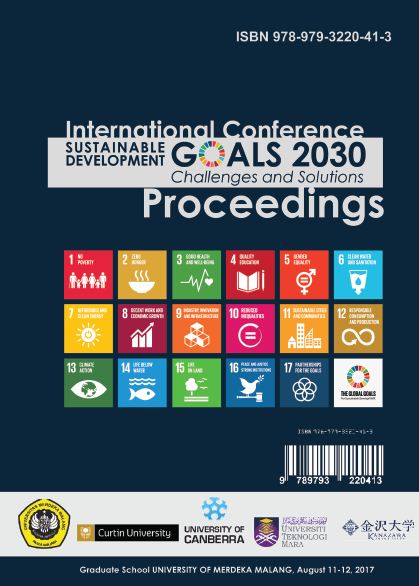Analysis of Competitiveness Traditional Retail To Modern Retails in Consumer Perspective
DOI:
https://doi.org/10.26905/icgss.v1i1.1838Abstract
Competition in the retail industry can be seen in many ways, there are competition between traditional retail and modern retail, competition between modern retailers fellow and competition among traditional retails. The large presence of modern retailers in the region forced traditional retail to compete with the modern retailers. This study discusses how traditional retail competitiveness with the modern retail focused on consumer preferences aspects. Variables used to measure consumer preferences are Human Resource with indicators Appearance of shopkeeper, Hospitality in service, Speed in service, Shop open time, while Merchandise variable with indicator, Appearance store, Merchandise display, Number of products available, Diversity of product type, Diversity Brands are sold. Method of analysis with descriptive analysis. The research results show that hospitality in service, speed in service and certainty of shop opening time of traditional retail stores need to be improved. As for the number of products available, the diversity of product types and the diversity of brands sold is a problem that stems from the limitations of traditional retail capital. The government already has a solution that with the opening of credit access to financial institutions with the issuance of OJK Regulation no. 76 / POJK.07 / 2016 on Increasing Literacy and Financial Inclusion in the community.Downloads
Downloads
Published
How to Cite
Issue
Section
License
Authors who publish in this journal agree to the following terms: Proceeding of International Conference of Graduate School on Sustainability is licensed under Creative Commons Attribution-ShareAlike 4.0 International. Creative Commons Attribution-ShareAlike 4.0 International License (CC BY 4.0) is applied when mandated by research funders, such as those who have signed. Open Access articles in Jurnal Cakrawala Hukum are published under theCreative Commons Attribution-ShareAlike 4.0 International (CC BY 4.0) license. The copyright of the received article shall be assigned to the journal as the publisher of the journal. The intended copyright includes the right to publish the article in various forms (including reprints). The journal maintains the publishing rights to the published articles. Authors must agree to the copyright transfer agreement by checking the Copyright Notice column at the initial stage when submitting the article.









